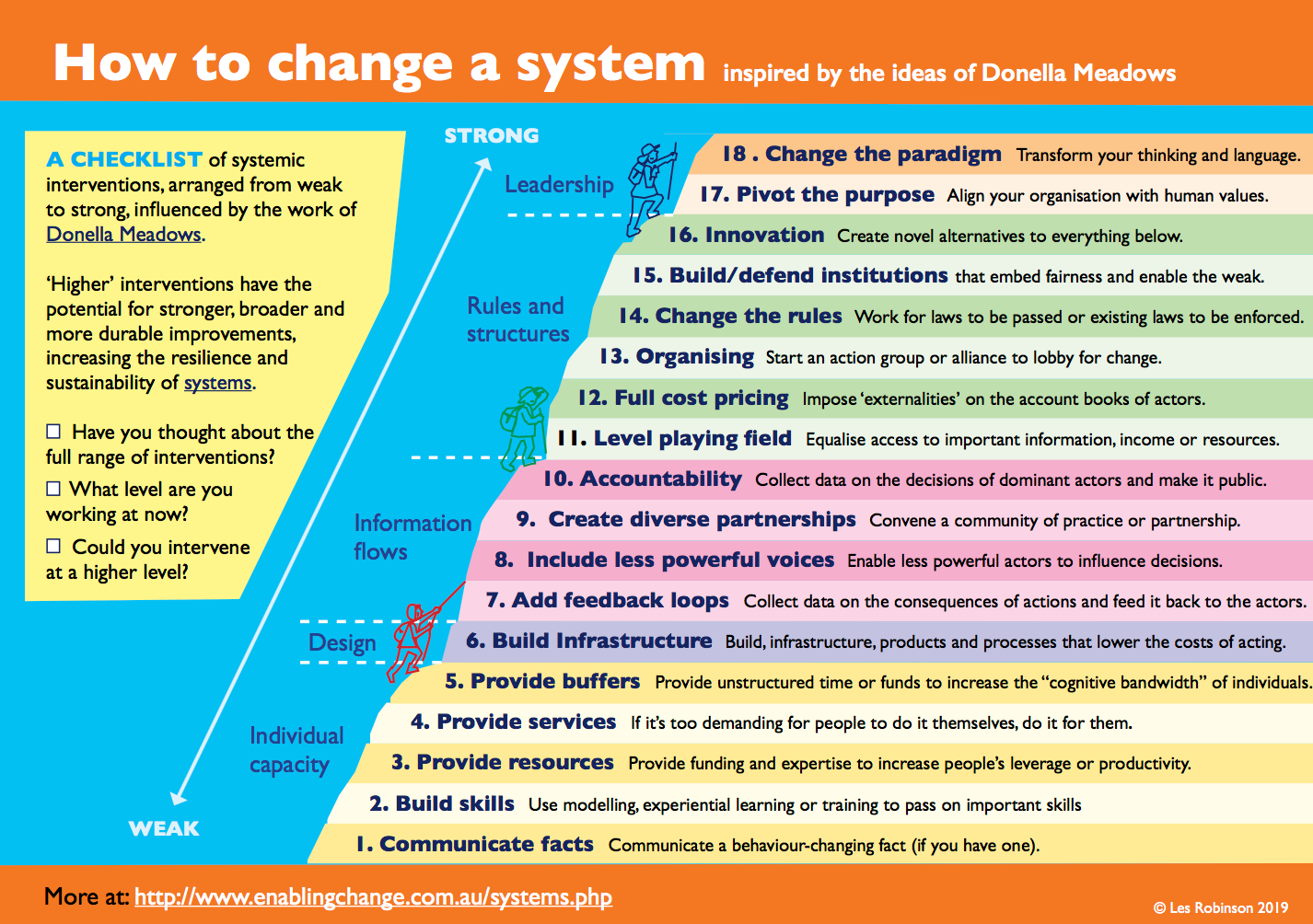
This blog post was co-authored by Miranda Marcus.
Increasing access to data can help address specific challenges such as improving humanitarian responses, or helping to ensure fair and effective public contracting. ‘Data-access initiatives’ are programmes of work that help support challenges like these, by increasing access to data.
In our Data infrastructure for common challenges project we have been exploring this concept in more depth.
One of the key questions we’ve been considering is how these initiatives identify what data infrastructure is required to address a range of social, environment or economic challenges.
This blog post is part of a short series that shares how a range of tools and frameworks might help us to design impactful initiatives.
In this post we look at ‘systems thinking’
‘Systems thinking’ encourages us to think about the world as a complex, interconnected system. Our energy sector, our health system, our transport networks and our entire economy are all examples of different types and scales of systems.
By understanding the different parts of a system, and how they interact, we can better understand how the system as a whole might be changed. This can then help to address challenges like switching to renewable energy sources, improving healthcare outcomes or helping people get to work. To change a system, we first have to understand it.
‘Thinking in Systems’ written by systems-thinking pioneer Donella Meadows is a great introduction to the topic. Our own Data Ecosystem Mapping tool encourages systems thinking by helping people to understand how data, insights and information flows between organisations by drawing out these different relationships.
At their core, data-access initiatives are about changing or intervening in systems. In her work, Meadows identified 12 leverage points that can be used to change systems. One of those levers involves changing how data and information is shared, to provide better insights that can improve how systems work. For example, providing access to data on energy usage or pricing.

Les Robinson has further developed Meadows’ 12 points into a checklist of 18 ways to change a system. Several of these are relevant to the design of data-access initiatives:
- Infrastructure – building or improving infrastructure, products and processes that make it simpler and easier to achieve the desired outcome
- Creating feedback loops and accountability to collect data on the consequences of behaviour and decisions and feed it back into the system
- Building inclusion and community to encourage more equitable access to data, share best practices, and encourage engagement with those who are impacted by the collection and use of data
- Improving or building data institutions to help to build strong governance and rules
- Encouraging innovation to look for better alternatives and outcomes
Open Climate Fix
A concrete example is Open Climate Fix, a non-profit research lab which is working to change the flow of information across the UK energy system, with the goal of increasing efficiency and significantly reducing the UK’s national carbon emissions. To do this it is using several different levers to change the energy system, including:
- building data infrastructure, by creating new data assets that consolidate existing public and private earth observation data, easier methods for accessing that data, and new standards
- creating a community of machine-learning researchers and engineers
- exploring innovative ways to analyse and use data, for example, to create hourly predictive forecasts that will help use wind and solar energy more effectively
- building feedback loops by providing ways to feed this information and insights back into the National Grid
It is the combination of the interventions that leads to a more effective initiative. By working with Open Climate Fix through our stimulus fund, we aim to explore how to make those interventions sustainable.
Systems thinking for design
We’ve found that systems thinking is a helpful way to think through the design of existing and new data-access initiatives. Understanding the range of levers available to change systems can help to plan and prioritise impactful interventions.
They can also guide us towards looking for best practices around each approach and help to integrate guidance, like Chicago Beyond’s guidebook for participatory research and the Centering Racial Equity toolkit into those activities.
--
If you’re involved in a data-access initiative and have applied systems thinking we’d love to hear from you. Also, please get in touch if you would like to discuss any of these ideas to understand how systems thinking, or other approaches might help.